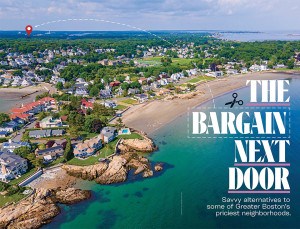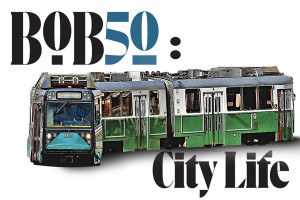Unlike the Redskins, Some Local High Schools Have Changed Offensive Mascots

Lew Glass
The Patriots’ opponent this week, the Washington Redskins, are easy to beat on the football field. But defeating team owner Daniel Snyder in his quest to keep the club’s disparaging name has proven to be a much more difficult task.
This summer, a federal judge ordered the cancellation of the Redskins’ trademark registrations. This upheld a previous ruling issued by the Trademark Trial and Appeal Board. Last week, in an effort to appeal the decision, the Redskins filed a brief that lists other offensive names that are granted trademark protection, including Take Yo Panties Off clothing, Midget-Man condoms, and Dumb Blonde hair products.
But the effort to eradicate team names and mascots that denigrate Native Americans isn’t exclusive to the Washington Redskins. In fact, many area high schools have faced similar controversies in their towns, albeit on a smaller scale.
Pete Sanfacon, who manages the New England Anti-Mascot Coalition, tells Boston roughly 85 high schools in New England and 41 in Massachusetts still use Native American imagery in their logos. Currently, Sanfacon’s old high school in Rochester, New Hampshire, is under fire for its “Red Raider” moniker.
But not all of these movements to alter offensive mascots have been met with resistance from school officials. Over the last eight years, at least four high schools in the Metro Boston area have removed Native American symbolism from their logos. One of the most contentious battles occurred in Natick, which changed from the “Redmen” to “Red and Blue” in 2008 before settling on the “Redhawks” in 2012.
“The kids were not happy at the time,” says Rose Bertucci, who was Natick High School’s principal in 2012 and now serves as the Dean of Instruction, Data, and Student Initiatives at the school. “They didn’t want a change and took that traditional stand.”
It wasn’t just the students who were upset. Some town residents formed the Redmen Forever group, which says on its website the “honored name Redmen was trampled under the tyrannical boot of political correctness run amok.” The site hasn’t been updated since May.
Bertucci says the “Redmen” debate is now a dead issue within the high school’s corridors, and touts an inclusive name-changing process as the primary reason why. After many athletes and coaches complained about the “Red and Blue” nickname, the administration had students and staff members come up with their own logos and name selections. The kids settled on the “Redhawks” emblem, which was designed by a Natick High alumnus.
Dedham High School is currently undergoing a rebranding process of its own, as it retired its Marauder mascot in 2007—a cartoonish depiction of a red-faced Native American with a wide open mouth and deranged-looking eyes. Principal Ron McCarthy says the change was necessary.
“I know there are roughly 40 high schools in Massachusetts that still have some sort of reference to Native Americans, and I’m not sure why,” McCarthy says. “It wasn’t an easy thing for this community to give up something that had been a symbol for such a long time, but I do know that they eventually decided they needed to move in a different direction.”
Natick High’s new principal, Brian Harrigan, says he’s proud to work in a town that was proactive on this issue and hopes other communities follow suit.
“My advice to other schools is, you need to think about who you are, what your values are, and what you’re trying to communicate in things that are as high-profile as your mascot,” Harrigan says. “If you can be proud of your mascot, that helps school spirit a great deal. I think it does need to be all-inclusive.”


